Bife de tira is a cut of beef that I had not seen before, so I bought it out of curiosity. It did look nicely marbled.
I tried to google it to find out what it was, but found contradicting information. According to some source it is cross-cut strip steak, according to others cross-cut boneless short ribs. Because of the high amount of marbling I decided to cook the beef sous-vide at a temperature of 57C/135F.
But it was hard to decide the time, so I made a couple of bite-size pieces so I could sample the tenderness during the cooking process.
I removed most of the fat cap, since it would hardly render at 57C/135F. I like a thin crispy layer of fat on my meat because it adds a lot of flavor, but not a thick gooey layer of fat.
I seasoned the beef with salt and pepper…
…and then vacuum sealed it. I also vacuum sealed the fat, as cooking it sous-vide extends its shelf life. Later I will render the fat from it and use it to sear steaks.
As I was expecting a long cooking time, the beef needed to be dipped in hot water to eliminate the risk of a bad smell.
The water needs to be at least 77C/170F, but boiling is also fine (and easier as you can tell without a thermometer that the water is hot enough). It is done as soon as the raw color has disappeared, 10 to 20 seconds.
During the sous-vide cook I sampled the small pieces to decide when to take the meat out.
After 6 hours it was still very tough, so it seems to be closer to short ribs than strip steak.
After 16 hours it was edible but not as tender as I like.
Finally after 24 hours it was tender, and so I took all of the meat out. As you can see, the fat has hardly rendered.
I chilled the meat to be able to store it and to be able to sear it well, as giving it a strong sear directly out of the sous-vide would overcook the meat. Click here to read more about that.
I patted one piece dry with paper towels.
I started searing on the fat side in a dry pan. The fat that rendered from the fat side, would be enough to sear the other sides later on.
I used tongs to hold up the meat as needed.
After searing the fat side, I also seared the other sides.
The fat curled up and shrunk a lot. Later I would discover that the connective tissue between the meat and the fat is too tough and not edible after 24 hours at 57C/135F, even though the meat is perfectly tender. So it seems that the fat cap is left on to keep the meat together (and to sell more weight), rather than for the flavor. You can also tell that the fat cap is not going to be used because the bife de tira is cut in such a way that if you slice it against the grain, there will be no fat cap in the slices.
I allowed the beef to rest, wrapped in aluminum foil, because of the long sear.
Then I sliced it thinly against the grain. I did try to include a bit of the fat cap by slicing on the diagonal, because at this point I had not yet realized that the fat cap wasn’t edible anyway.
The bife de tira cooked this way turned out very tender and flavorful.
Flashback
Two years ago I read Modernist Bread and it changed the way I make bread. This high hydration bread is still the bread I bake for almost every dinner party. It has a great crust, wonderful flavor, and perfect texture.



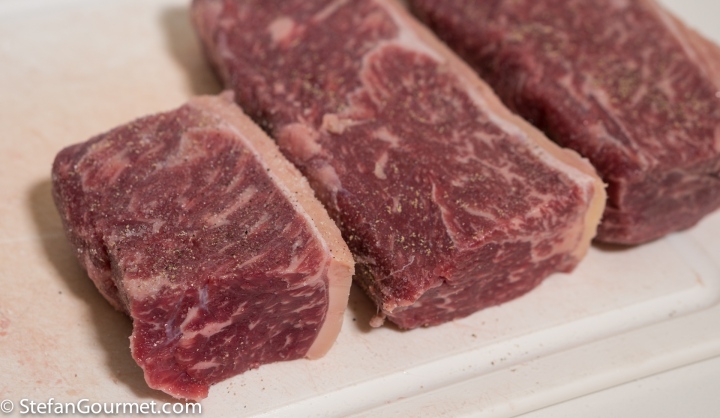


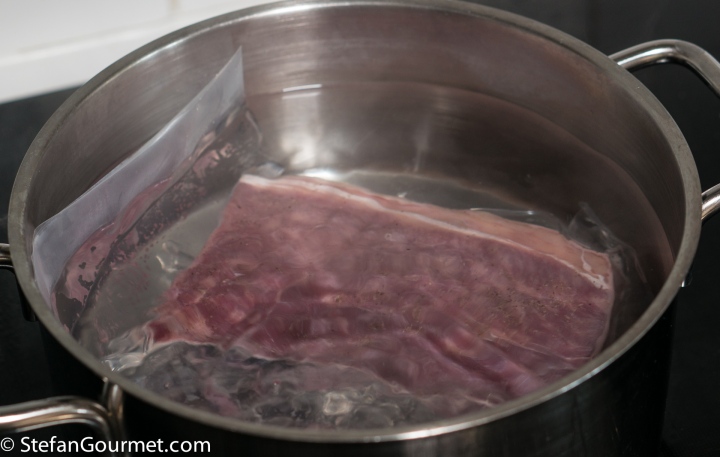







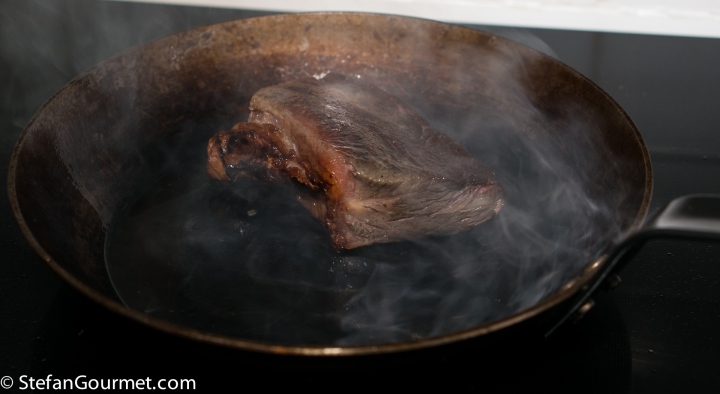


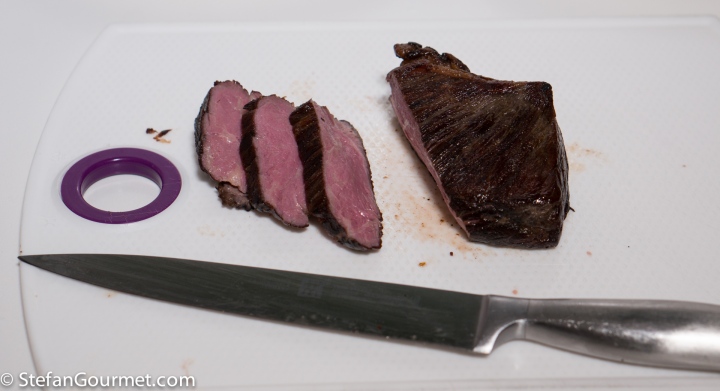
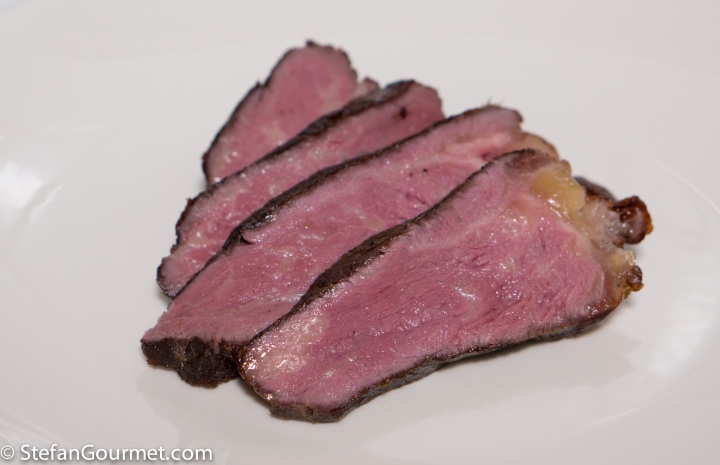


It looks very good. I like so much meet but I’ve never tried to cook with your method. Bye bye
LikeLiked by 1 person
Thank you Bea. Once the pandemic is over, you should come visit and I will prepare sous vide meat for you!
LikeLiked by 1 person
I loved so much holland that it would be really a beautifull dream. I wonder when this big problem will finish and we can start again with our life. In the meanwhile I’m having a wonderfull period in Elba island. Lot’s of love Beatrice
LikeLike
Being originally from Brazil I can tell you that “bife de tira” varies throughout South America. In Brazil it’s usually strip steak whereas in Uruguay it’s usually cross-cut (boneless) short ribs—although in my last trip to Brazil I was served Cross-cut short ribs.
Usually I dry-rub marinate the meat for a couple of days under vacuum, wash and dry it and then sear it on all sides paying attention to the fatty areas. I then cook it sous vide at 60C/140F for 48-72 hours. The bag juices are reduced and used for serving. I usually just serve rectangular pieces of the cooked meet. The outside color is dark and inside it’s a beautiful pink.
As usual, your mileage may vary and batteries not included 😜
LikeLiked by 2 people
Thanks, that is very interesting. It sounds like the bife de tira you use is definitely from short ribs, as 48 to 72 hours at 60C/140F would cook strip steak to mush.
LikeLike
I did look this cit up locally – here it seems to be available only from Argentinian butchers for ‘barbecue’ and is termed ‘Argentinian rib steak’ . . . I learnt something as all the cuts pictorially shown were different from those we normally buy here.
LikeLiked by 1 person